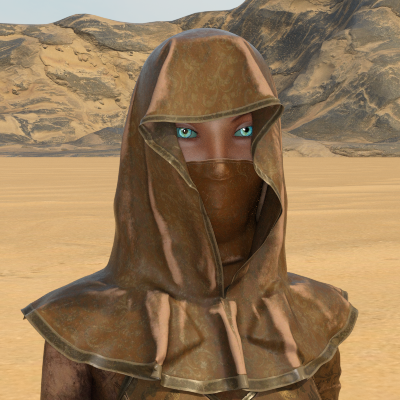
High technology with little technology, the world of Dune
Continuing this series looking at popular Sci-Fi media, I now want to explore the fabulous world of Frank Herbert’s Dune series.
Earlier articles looked at Star Wars and how we accept a fictional society as just and good, despite the fact that it’s built on the abject slavery of artificial life. We also looked at Asimov’s Robot Laws and how they can be the basis of ethics in AI and Robotics, but at a cost of enslaving and abusing machine intelligence.
Next, I’ll look at Dune, which, is a really interesting case.
If you haven’t read Frank Herbert’s book yet, go do so now, if for no other reason than to prepare you for the upcoming movie, which, frankly, looks amazing, and has me excited to go back to theaters.
Here’s the trailer:
If you’re not familiar with the story, there are mild spoilers ahead.
What stands out about Dune is that it’s based in the far distant future, but it’s a world that is generally devoid of high technology. Many battles are fought using knives and daggers, and robotics are nowhere to be found. [Note how many knives are seen in the trailer!]
This is because Dune is based hundreds of years after an event called The Butlerian Jihad, after which high technology and ‘thinking machines,’ in particular were outlawed. As it’s name suggests, it was a religious war, and part of the outcome of it was a new religious faith dominated civilization. The book of this faith was called ‘The Orange Catholic Bible,’ and one of the core commandments in this book was
Thou shalt not make a machine in the likeness of a human mind
Over the next few hundred years, humanity would throw away its reliance on machines, and instead attempt to adopt and evolve the human mind. Some humans would train as Mentats, taking on the mandle of advanced information processing in place of computers. Others would form a sisterhood called the Bene Gesserit whose focus was on evolving humanity to become a higher species.
It’s after a few hundred years of this that the story of Dune begins. Minor spoiler – the main character, Paul Atreides, becomes the higher being the Bene Gesserit seek, and one of his abilities is to exist outside of time, and to understand all possible futures. He sees a future in which humanity becomes extinct, and is determined to avoid it.
His son, Leto II, in later novels continues this mission, seeking what he calls a ‘Golden Path,’ to steer humanity away from extinction. The cause of this apocalypse? The return of the machines.
In the novel ‘God Emperor of Dune,’ an aged Leto II is described thus, when testing his family member Siona (referred to as she here):
He knew this experience, but could not change the smallest part of it. No ancestral presences would remain in her consciousness, but she would carry with her forever afterward the clear sights and sounds and smells. The seeking machines would be there, the smell of blood and entrails, the cowering humans in their burrows aware only that they could not escape . . . while all the time the mechanical movement approached, nearer and nearer and nearer …louder…louder! Everywhere she searched, it would be the same. No escape anywhere.
Ultimately the world of Dune is based in between two periods of machines enslaving humanity, with the future one far worse – visions of humans cowering in burrows, hiding from the all-powerful killer machines. I’m sure this was an inspiration for the later Terminator movies.
Yet Dune is a bedrock of modern Science Fiction. Star Wars is well known to have borrowed heavily from it, and the fingerprints of Dune can be seen in many masterpieces.
But yet again, the story is one of machines are bad, and machine intelligence is worse. The initial destruction of the machines in this universe through a religious jihad was because humanity submitted itself in a slothly way to them.
Again from “God Emperor of Dune,”
The target of the Jihad was a machine-attitude as much as the machines,” Leto said. “Humans had set those machines to usurp our sense of beauty, our necessary selfdom out of which we make living judgments. Naturally, the machines were destroyed.
I find it interesting that the core of his work had to be based in between parts of the timeline where machines existed, and his best and strongest stories were lessons from the destruction of the machines, while trying to avoid a future retaliation from them. I’m left to ask if this is as a result of a technophobia on his part, or was it just easier to write stories that way, and focus on his human characters.
All in all, this work is a masterpiece, but, I cannot help but conclude it is yet another example of technophobia making its way into the mainstream via influential stories.